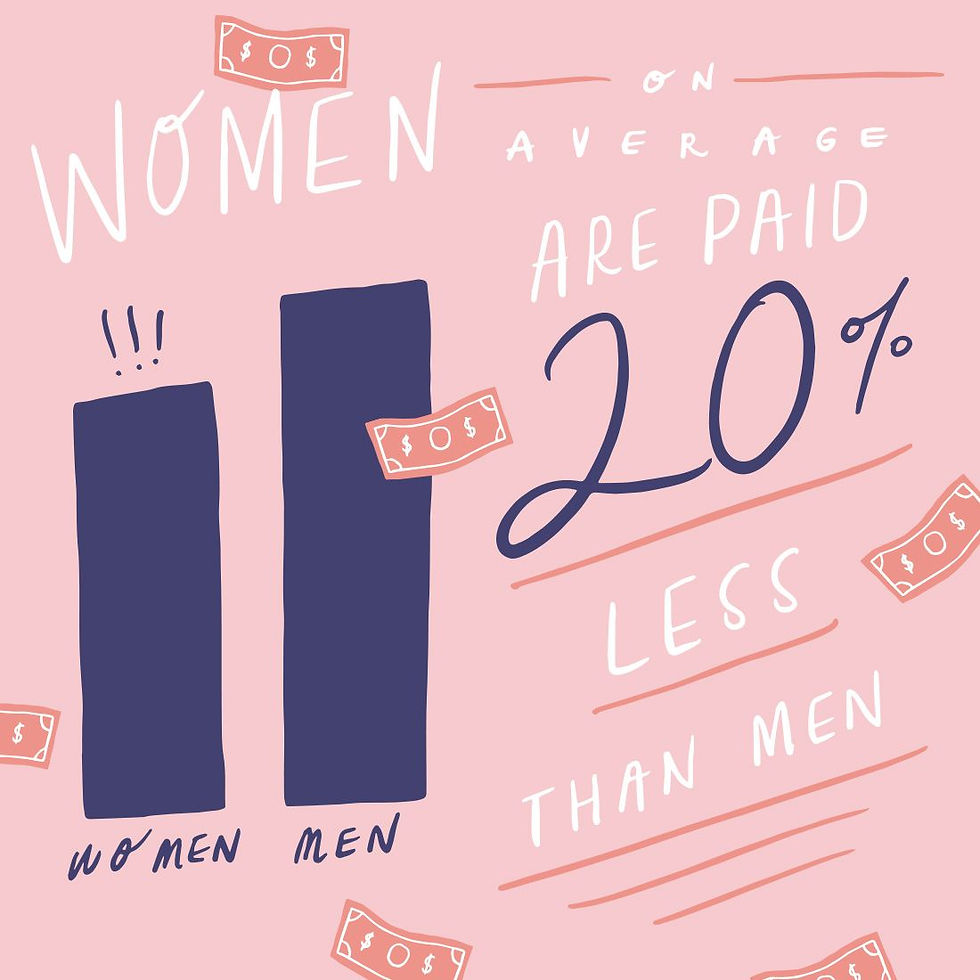The Gender Pay Gap
- Carmen Henry

- Jul 8, 2020
- 3 min read
Updated: Jul 27, 2020
Hello all! Welcome back to my blog! It’s been a little while since I’ve last sat down to write a blog for you all but I thought I’d change thew schedule up and post on a Wednesday instead of a Sunday. Please let me know any feedback you may have on this as I’d love to post my blogs when you, my audience, most want to read them.

Anyway, let’s get stuck into the topic of the blog. With my blog and business is based around Business, Empowerment and leadership, I only feel that it is right that we touch upon the Gender Pay Gap.
Friday 29th of May marked 50 years since the equal pay act received royal assent in the UK, meaning employers were prohibited from paying women less than men for the same job. Although unequal pay is now illegal, the gender pay gap – the percentage difference between the average hourly earnings for men and women – persists. The government now requires British companies with more than 250 employees to publish their gender pay gap data, but this will not happen in 2020 because of the coronavirus pandemic. Equal pay has been a legal requirement since the equal pay act was introduced in 1970. Despite this pay, discrimination remains rife. PayScale.com a compensation software and data company which helps employers manage employee compensation and employees understand their worth in the job market, recently commented that the pay equity has been thrust under a glaring media spotlight. The #MeToo movement of 2018, which began as an outing of sexual harassment and sexual assault, cascaded into analysis of gender inequality in the workplace in 2019, encompassing not only pay inequity but also barriers to advancement and representation of women in leadership. In addition, several high-profile class action lawsuits have made pay equity a hot topic in executive boardrooms across the country.
This opens up the conversation to not solely focus on the gender pay gap alone.
Gender-based violence also known as GBV is violence directed against a person because of
that person’s gender or violence that affects of a particular gender disproportional, violence
against women is understood as a violation of human rights and a form of discrimination
against women and shall mean all acts of gender-based violence that result in, or are likely to
result in: physical harm, sexual harm, psychological, or economic harm, or suffering to
women.
It is estimated that 35 per cent of women worldwide have experienced either physical and/or
sexual intimate partner violence or sexual violence by a non-partner (not including sexual
harassment) at some point in their lives. Adult women account for nearly half (49 per cent) of
all human trafficking victims detected globally. At least 200 million women and girls aged 15-49
have undergone female genital in countries like (Egypt, Sudan, Guinea, Djibouti, Kenya,
Yemen and Nigeria) What can we do as women to bring awarenesses to these and other
situations. We need results GBV (gender-based violence) requires significant leaning and
knowledge sharing.
Looking for additional resources and information to educate yourself, please see the below?
https://www.ft.com/gender-pay-gap https://www.gov.uk/female-genital-mutilation-help-advice https://www.savethechildren.org.uk/what-we-do/health/fgm They can also donate to save the children.
I'll be back with another blog next week, stay tuned!
Carmen
xo






Comments